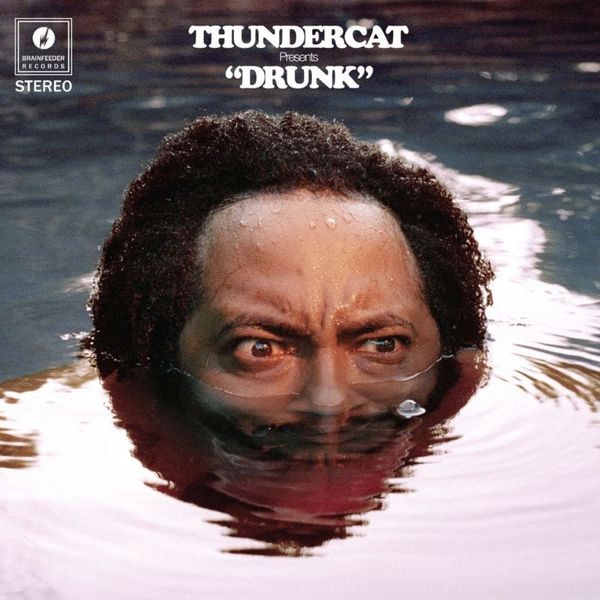André
We all root for Thundercat. A magnificent multi-instrumentalist with charm and charisma in spades. He’s contributed to some of the most extraordinary records released in the past decade, and even picked up a grammy for his work on Kendrick Lamar’s To Pimp a Butterfly. There’s no denying his talents, nor the distinctive mark he commits to a variety of musical projects. However, there’s certainly a conversation to be had about his quality as an individual recording artist.
For all his tremendous traits, Thundercat has a clear inability to stick to a single sentiment for more than a few minutes. Though I enjoyed 2017’s Drunk, I took issue with the rapid-fire approach to track sequencing, with some genuinely exciting ideas only lasting for a mere 40 seconds. His latest record, It Is What It Is, unfortunately suffers from the same issue, though thankfully to a far lesser extent. This is perhaps a more consistent release, while lacking the highs of its predecessor.
It Is What It Is is a vibe. Sometimes sublime, sometimes funny, sometimes slightly irritating. But it’s a vibe, nonetheless. “Dragonball Durag” is a clear highlight, standing out as one of the more fully realised and developed songs on the record. If only there were more. It Is What It Is often ponders without reaching any conclusions, and whilst that approach does result in some interesting music (and some rather peculiar lyrical themes), it can end up being frustrating.
Still, I think it’s best to take the record for what it is, rather than what it isn’t. You can sense acceptance in his musings, hence the album title, and when you manage to peak through the reverb-soaked instrumentals, it’s somewhat gratifying to see the emotional development of one Stephen Lee Bruner. His music remains expressive, and messy. True to form. Just like Drunk, it comes recommended with some significant caveats. I imagine that history will show Thundercat to be one of the greatest collaborators of this musical era. It would be a shame for it to just end there.
7 out of 10
Fred
It Is What It Is is what it is. Thundercat rides the album like a surfer hanging ten on the world’s smallest, smoothest, slowest wave. It’s drifting with style, a good time but not terribly eventful. That will likely be enough for many listeners – and I certainly don’t begrudge the approach – it just seems a bit anticlimactic.
You can tell on an intellectual level that the arrangements are sophisticated and sexy. The album knows its way around a bassline, and the harmonies are sunlit echoes. (Echoes.) I understand all that, and I hear it… I don’t necessarily feel it. The production is so polished and the grooves are so smooth you’d be forgiven for missing them entirely.
There’s no harm in swish, easy listening. I’ve enjoyed It Is What It Is, but I doubt it’s something I’ll be returning to. Good vibes are a dime a dozen these days. That’s not enough on its own, not for me. Besides, how funky can something really be when it sounds like it was made in a laboratory?
6 out of 10
Marcus
The bohemian, avant garde, auratic bass genius of Thundercat offers a not uncommon quandary of where the seam between man and persona can be found, and the overarching narrative of It Is What It Is seems to be a reflection on this duality.
From the opener to the close, Thundercat shines a light on the hedonistic, space-age, party-focused character whose fingers so deftly dance up and down the neck of his bass, with the implication being that the persona is a mask for some insecurity or deficiency. The details remain vague, ripe for your own superimposing of self on the tale, calling to the feeling of running from some aspect of your identity by throwing yourself into recreation, calling to your friends to join you, wearing your abandon as a strength. Look how little I care, wearing my Dragonball durag, finding satisfaction without making an effort.
It’s not the most inspired lyrical direction, but there’s enough nuance and good humour between tracks to lend the writing enough weight and originality to be worth hearing. The trouble is that, because of stylistic decisions made in the production, each track hides the lyricism behind excessive reverb, strained falsettos, and a general sense of smudginess that blurs the experience into a disappointing monochrome. It’s atmospheric, light on hooks, and seemingly packaged to give off the laissez-faire air of carelessness of the persona described by the writing. I can get behind that as a concept; as a listening experience, it falls sadly flat.
Enjoyable as it can be to kick back to, this album is another case of wondering how great Thundercat might sound if he highlighted his strengths rather than hiding them behind a deliberate and exacting aesthetic.
6 out of 10



